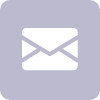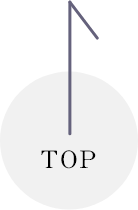Contents
Our concept of hair loss and thinning hair treatment
I have been involved in dermatological treatment at Minato Shiba Clinic for many years, and especially, I felt that the conventional insurance treatment for hair loss and thinning hair had unsatisfactory results. Recently, know-how on male pattern baldness (AGA) has been established and an increasing number of patients are experiencing improvement in their hair loss and thinning hair disorders. However, it is also true that many patients are still suffering from AGA because even drug treatment for AGA is not effective enough. Recently, regenerative medicine has been applied to the treatment of hair loss and thinning hair disorder, including such patients, and reports have shown promising results. Our clinic also provides regenerative medicine for all types of hair loss and thinning hair disorders based on our many years of experience and knowledge. Especially, we focus on female pattern baldness, AGA refractory alopecia, alopecia areata, and alopecia after anticancer drugs and radiation therapy.
The period of time between the growth and fall of a single hair is called the hair cycle. Its period is said to be 4 to 6 years. The hair cycle consists of a 2-6 year growth phase in which hair grows, a 2-3 week regression phase in which growth stops, and a 2-3 month resting phase in which growth stops completely and hair tends to fall out. Assuming that it takes a minimum of about 2 years for one cycle, the hair matrix cell can divide 50 times during its lifetime, which means that it will be maintained for 2 years X 50 = 100 years. However, in androgenetic alopecia (AGA: Androgenetic Alopecia), for example, the hair cycle is shortened to 0.5 to 1 year, so that in 25 to 50 years, hair matrix cells stop dividing and hair falls out. Therefore, it is necessary to take measures to prevent hair loss even before this happens, since it will be too late once the division has stopped.
Types of hair loss
Alopecia Areata
In alopecia areata, which is said to be related to an immune abnormality (a type of autoimmune disease), hair matrix cells are damaged by inflammation induced by an immune reaction, but hair stem cells remain alive. Therefore, the primary treatment for alopecia areata is to suppress the abnormal immune response and prevent inflammation, so that hair can regrow.
Female-pattern alopecia (female male-pattern alopecia)
Female androgenetic alopecia is one of the symptoms of female hair loss, in which hormones in the body cause hair to thin. When testosterone, a male hormone in the body, is denatured and becomes dihydrotestosterone (DHT), it issues a false command to the hair matrix cells to “stop hair growth,” which is supposed to promote hair growth. The result is diffuse loss of hair throughout the scalp.
The incidence tends to increase in women in their 40s and after menopause, when the amount of female hormones decreases due to aging and stress, making them relatively more susceptible to the effects of male hormones. The presence or absence of DHT receptors is also considered to be due to genetic factors and can be inherited from mother to daughter. Other causes include hypothyroidism, iron deficiency anemia, collagen disease, and extreme dieting.
Hair loss progression pattern of FAGA (female androgenetic alopecia)
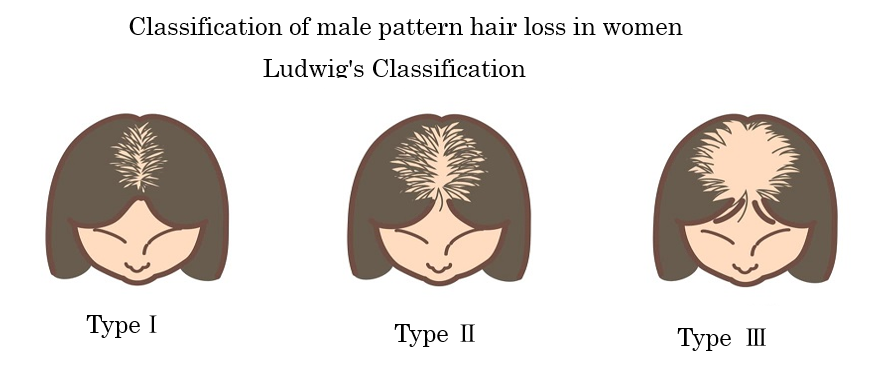
Acute alopecia areata
Hair loss caused by drugs, external trauma, stress, or other factors that inhibit the growth of hair in the growth phase and increase the number of hairs in the resting phase. Hair loss begins 2 to 4 months after exposure to these etiologic agents. Hair loss is said to last several months
Chronic telogenetic alopecia
Alopecia during the growth phase
The proliferation of hair matrix cells in the growth phase is suppressed by the side effects of anticancer drugs and radiation therapy, and the hair falls out all at once after about 10 days. Since growing hair accounts for nearly 90% of the total hair, it is close to hairless. Hair will grow back within a year after treatment is completed, but it may be thin throughout or the hair may become thinner. Although the causes are different, the aforementioned alopecia areata is also considered a type of growth-phase hair loss.
Thus, the causes of hair loss and thinning are said to be various, but apart from age-related changes, they can be summarized as a lack of blood flow around the hair matrix cells, which are the source of hair, a lack of nutrition for the hair matrix cells, and a shortening of the growth phase due to decreased proliferation and increased apoptosis (natural death) of the hair matrix cells. The trigger that elicits this situation may be anticancer drugs, irradiation, sensitivity to male hormones, or abnormalities in immune capacity. That is, by improving the hair matrix cells and the surrounding environment, all types of hair loss and thinning hair disorders may be improved. Regenerative medicine protects hair matrix cells by improving blood flow around the hair matrix cells through the use of angiogenic substances in cytokines, increasing the number of hair matrix cells through the use of cell growth factors, reducing inflammation through the use of anti-inflammatory substances, reducing spontaneous death of hair matrix cells, and protecting hair matrix cells by suppressing abnormal immune responses. The hair matrix cells that have been dormant in division are then switched on and form new hairs. This, in combination with continued treatment for hair loss and thinning hair, is expected to have a significant synergistic effect. It is regenerative medicine that gives you the power of life, when you are on the verge of giving up!
Treatment protocols of our clinic
1 Water-light injection of fat stem cell culture supernatant solution into the area of hair loss
2 Application of topical minoxidil
3Internal Therapy
4 Shampoos
Case report
Hair loss treatment example
AGA treatment drug + minoxidil lotion + adipose stem cell supernatant liquid topical injection (once a month)


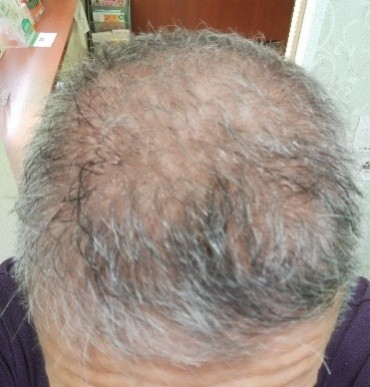
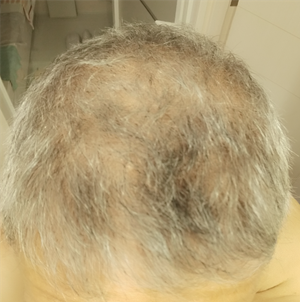

*: Temporary hair loss was observed from after 30 days to 60 days.
right slide→| Adipose stem cell cultured supernatant solution water light injection | 1 time 2ml/10-20cm2 120,000 yen |
|---|---|
| Minoxidil Topical Solution 5% (Fuji Chemical Industry) | 60ml 7,500 yen |
| Minoxidil Topical Solution 1% (Fuji Chemical Industry) | 60ml 6,750 yen ) |
| Minoxidil, finasteride oral pack | for 30 days 16,500 yen |
| Ketoconazole shampoo | 1 bottle, 3,300 yen |
As a rule, payment is due on the agreed upon date.
Please use credit card.


